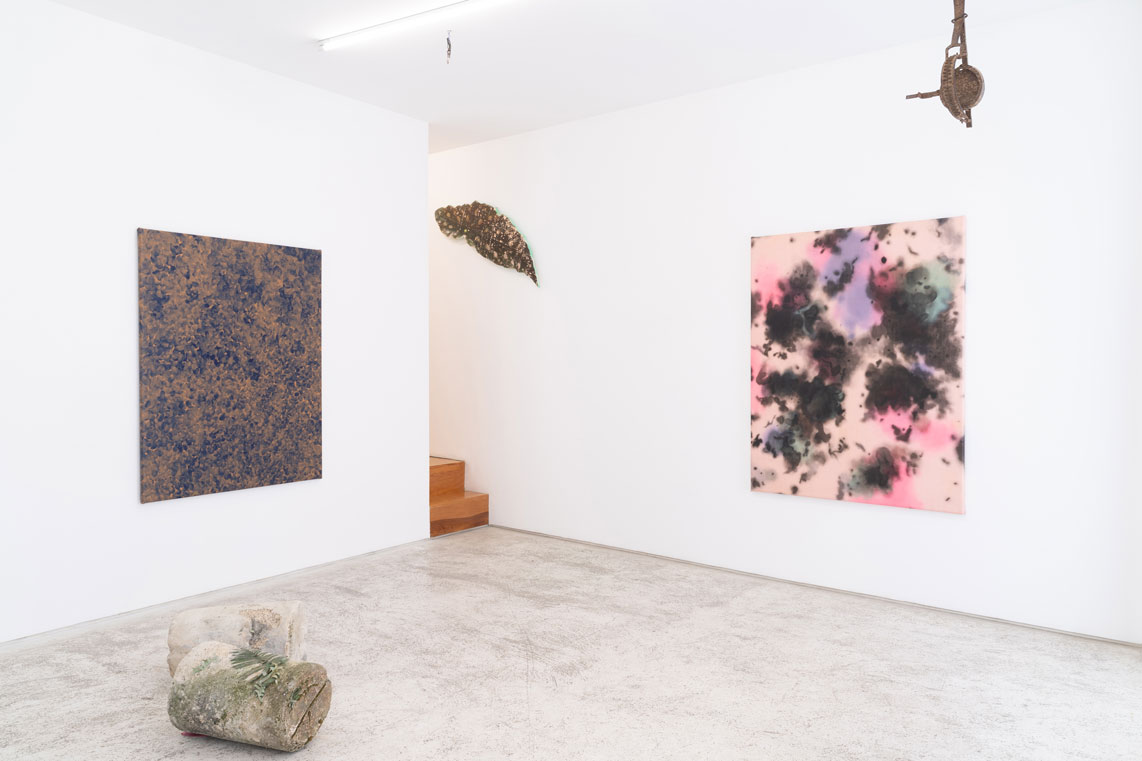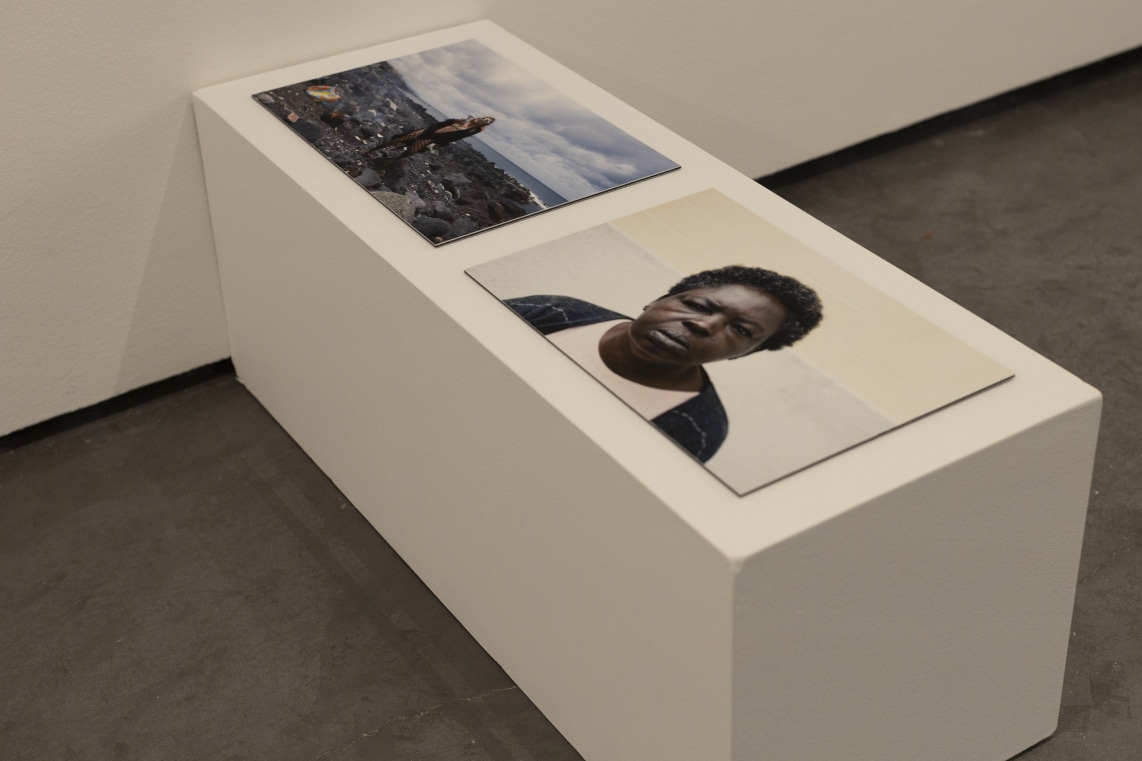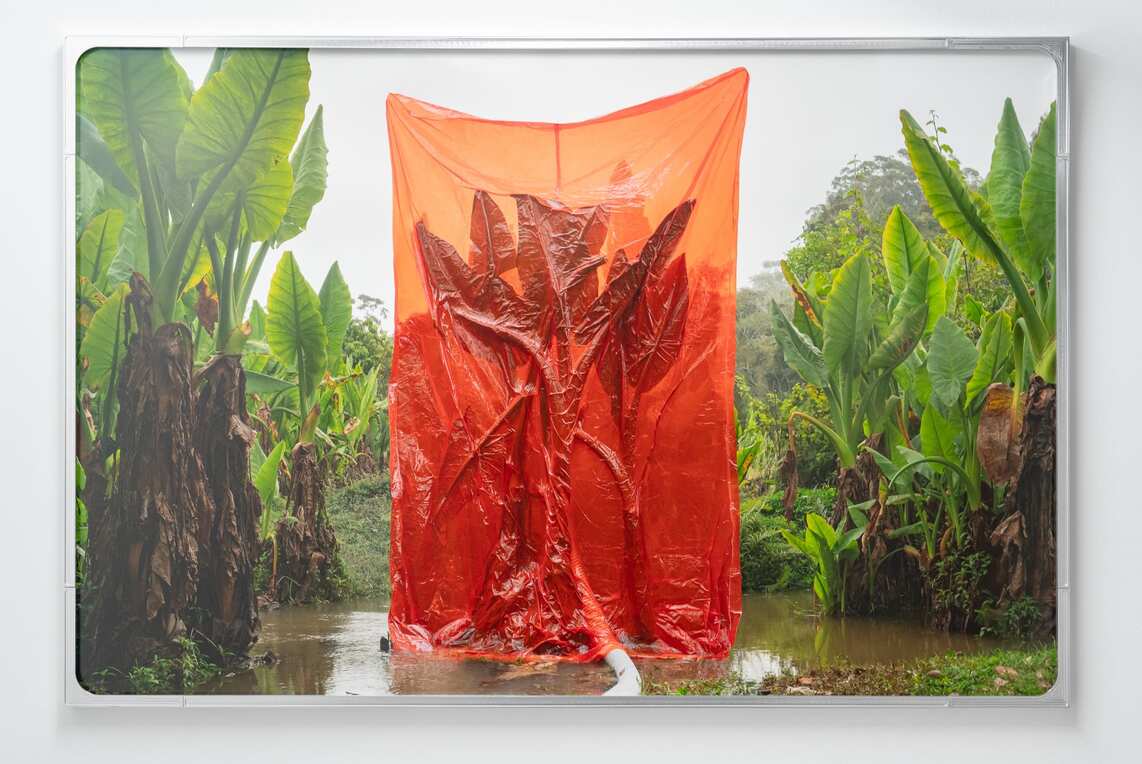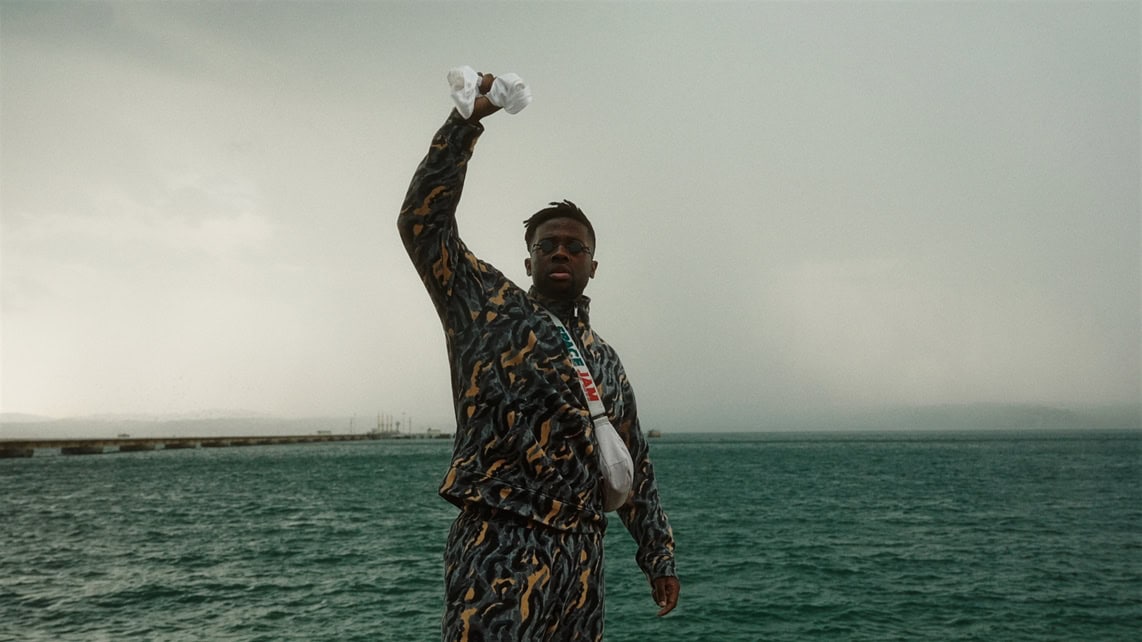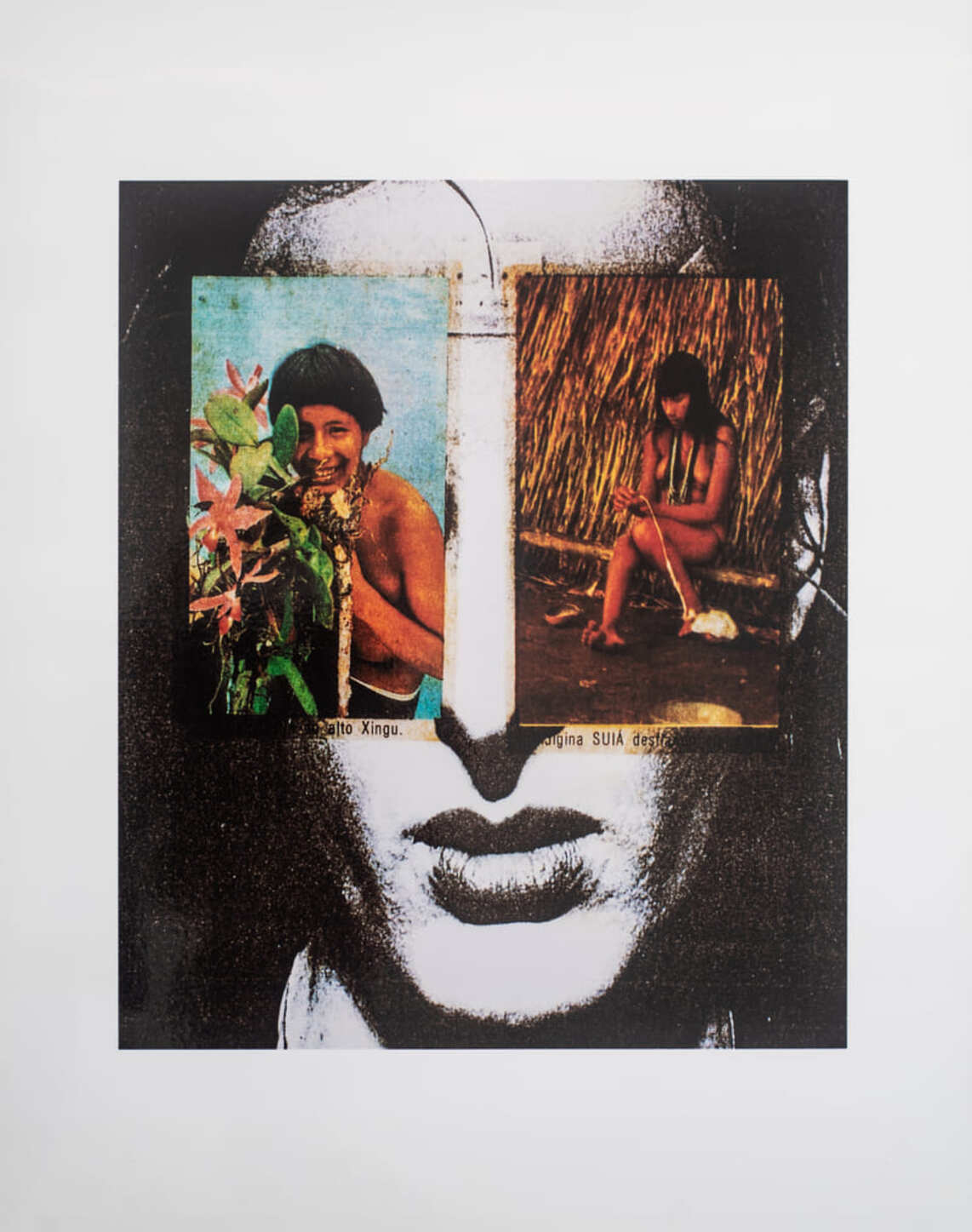“Why should we go back to talking about witches?” is the provocative remark made by Sara Magno in the text of Pagan Days, Pedro Valdez Cardoso’s first solo exhibition, at NO·NO Gallery. With the nine pieces on display, the Lisbon artist offers clues not only about why, but above all about how to get back to talking about witches, magic, paganism – feminism, faith, politics.
It all starts with a fly: The end is the beginning, is the end, is the beginning, is the end… The species of flies we coexist with have a life cycle of about thirty days, a brief period during which they lay between five hundred and two thousand eggs. With panoramic lenses and paranoid reflections, these all-seeing eyes carry the destiny of a lightning-life – and a lightning-death, probably. Captured in a glass cup, the fly we meet at the gallery entrance apparently still awaits release. Even though we already know the outcome, there is a tension that makes us bite our lips and bite our nails to keep from lifting the glass and letting it fly away – like the anxious spectators of the magic trick where a person is supposedly trapped in a cage with water up to the top. How long can they hold their breath?
By addressing the life-death-life cycle, Pedro Valdez Cardoso also offers us an image – or a sculpture or a corpse – of life that persistently vibrates to the limit, to the last second. In the brilliant words of Isabelle Stengers [1], magic moves us away from the search for the dangerous truth (truth-seeking) and guides us towards the discovery of the forces that rule the world (strength-seeking), in each of its small and big vital expressions. To speak of magic is to point again to the question of (will) – not as sovereign and inconsequential hubris, but as the ability, like a fly, to keep one’s eyes open, alert and obstinate.
It is not a belief. The questioning “But do you believe in witches? Goddesses? Magic?” (Art?) is irrelevant, just like the claim that it is all just a great big fiction, a fairy tale for children. The answer would be a simple counter-question, coupled with a ironic smirk: so, are you one of those people who believe that fiction has no power? [2] Witches make us realise that no concept or scientific criterion is above or immune to more-than-human relations, agency, exchange: their craft is “an art of immanent attention, an empirical art that inquiries into the good or the harmful” [3], an ethical evaluation that is often secondary in our Western judgements – heirs of the inquisitors and colonisers – so tied to the real/false dichotomy.
Do not go gentle in the night. Witches do not allow themselves to be resigned – it is no accident that their autonomy and power of resistance were so persecuted and condemned in the early days of capitalism [4]. Today, their struggle is comparable to that of indigenous communities, racialised people, oppressed cultures and histories that, by being solid proof of other possible ways forward, continue to be swept under the rug of mainstream History. But they resist. Like some rubber, which will live for at least 218.000 days longer than a fly – and at least 180.000 days longer than us humans – all that is abandoned will return from the darkness we ignore. Even if in another form, in another shape. Ecdise: underground – of consciousness, earth and the NO·NO Gallery -, one of the central pieces in the exhibition and typical of Pedro Valdez Cardoso’s work, reminds us that this skin, this structure and this system will no longer serve us.
The witches and cosmologies about which we speak with fear, terror or contempt are left behind. The watchwords become “care”, “protection” and “experience”. “Magic” ceases to be a modern metaphor to describe a beautiful sunset, a touching melody or even an art exhibition that moves us particularly. The next step will perhaps be to move from talking about witches to talking to them.
Pagan Days is at NO·NO Gallery in Lisbon until May 19, 2023.
[1] Speech by philosopher Isabelle Stengers on the Magic and Ecology Insurrection interview podcast, part of the Magic and Ecology online programme of conferences and events, organised and supported by the Centre for Research in the Arts, Social Sciences and Humanities – CRASSH at Cambridge University.
[2] Stengers, Isabelle. (2017). Reativar o animismo. Edições Chão da Feira, Caderno n. 62, p. 12.
[3] Ibid., p. 12.
[4] Cf. Federici, Silvia. (2020). Calibã e a Bruxa: As Mulheres, o Corpo e a Acumulação Original. Lisbon: Orfeu Negro.
